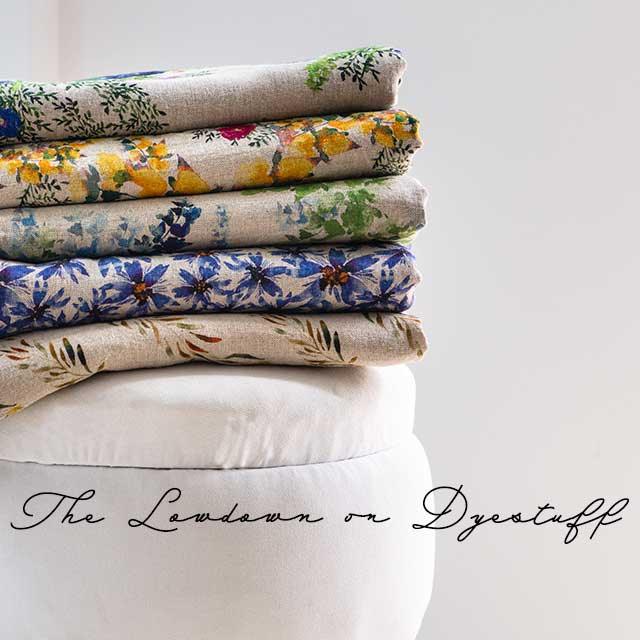
Picture this: you’re a conscious consumer, both in utensils (beeswax wraps are your new favourite smell) and fashion (second hand shopping has elevated your style to enviable heights). You’re looking into making even more changes, and you find this cool new company online, selling linen home textiles (SWF, of course). You have a look at their products, and in the description it says “printed with fabric reactive dyes”, which leads you here (see what I did there?).
What are fabric reactive dyes? And why is that important? And now we have to worry about the pretty colours on our clothes and textiles?
Unfortunately, we do. And the issue of dyestuff is in fact one of the more complicated aspects of the textile industry that others have explained better than I ever will, most notably here.
So what dyes are used to print our beautiful prints on our textiles? Our manufacturer works with Huntsman digital printers and the fabrics are printed with Huntsman NOVACRON® ADVANCE, a fabric reactive dye.
Fabric reactive dyes have certain benefits over conventional dyes (also called direct dyes). They don’t contain Azo chemicals. They need less water to be fixed to the fabric, and can be applied at much lower temperatures. The dye cycle is shorter (everything works a bit faster) so that less wastage is produced. And importantly for us, the colour fastness (meaning how long the print will stay visible on the fabric) is excellent.
Of course, this is not an uncomplicated dye. The dyes are made from synthetic petrochemicals. A lot of salt is needed to fix the dye to the fabric. And the effluent is strongly alkaline, which is dangerous if left untreated.
All sounds a bit scary, doesn’t it? This is where Supplycompass comes in. I put my trust in them to assure me that the manufacturer treats the wastewater from the dyeing process, and that all their workers have sufficient protective equipment when handling it all.
As always, please leave your comments, thoughts, ideas below. I’d love to hear from you on this complicated subject!
Sophie

